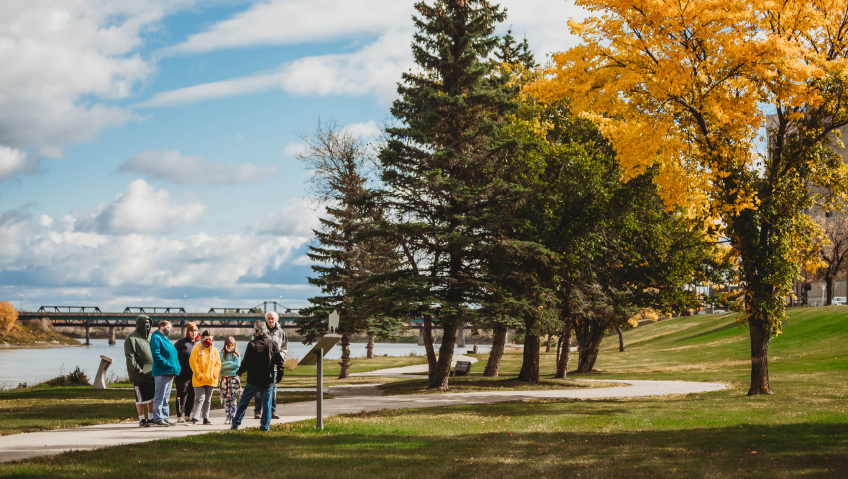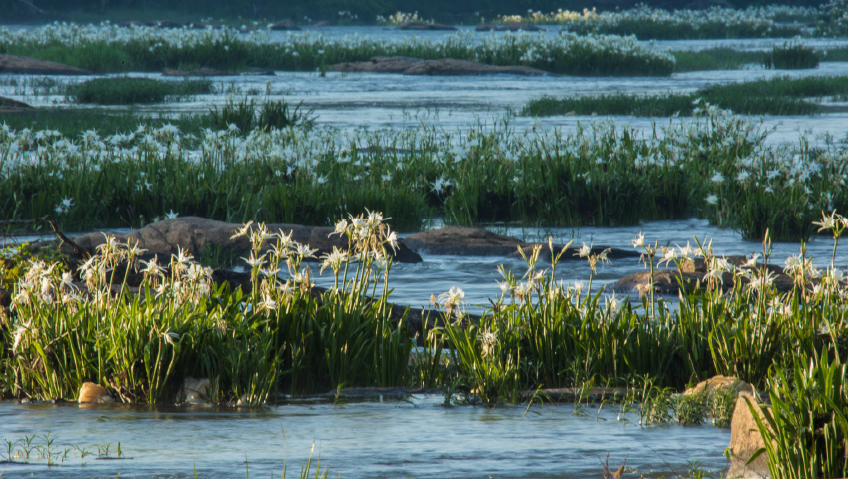The City of Prince Albert is a vibrant community of 36,000 residents located in the heartland of northern Saskatchewan. While the area is already home to a wide range of amenities as well as stunning natural scenery and outdoor recreation, local leaders are working hard to create even more opportunities for both business and pleasure.
“We are really committed to advancing growth and investments in Prince Albert,” says Community Development Director Craig Guidinger. “We want to be seen as a community that is open for business. We want to be seen as a community [that is] excited and enthusiastic about pursuing opportunities that drive our city’s progress, not only within the corporate limits of the city, but also throughout the region. That is really important to us. We are always looking for ways that we can advance infrastructure, create those partnerships, foster economic diversity, and be true champions of economic sustainability and prosperity.”
To be sure, Prince Albert is well positioned for ongoing economic growth and development. The surrounding region is rich in natural resources including timber, agricultural products, and minerals, offering significant economic potential. The local economy is built upon a diverse range of industries from agriculture and forestry to mining, retail, and healthcare. Tourism is another strength, and the city is a destination for sports, culture, and outdoor recreation. “This economic diversity creates a stable foundation for new businesses and industries seeking to establish themselves,” says Planning and Development Manager Michael Nelson, A.Sc.T.
Prince Albert’s outdoor recreation opportunities draw visitors and provide a high quality of life for residents. “Prince Albert is renowned as a haven for outdoor enthusiasts, boasting an abundance of lakes, rivers, and parks that cater to a variety of recreational activities,” says Nelson. “Residents and visitors alike can indulge in hiking, cross-country skiing, mountain biking, kayaking, boating, hunting, fishing, and camping within our beautiful landscapes of the region.”
Within the city limits, outdoor enthusiasts enjoy access to the renowned Little Red River Park. “It is recognized as one of Canada’s largest municipal parks,” he says. “It features extensive trails suitable for biking and hiking, as well as a hill that transforms into a prime spot for skiing and snowboarding during the winter months along with many cross-country ski trails that are groomed. This diversity of outdoor amenities makes Prince Albert an ideal destination for those seeking an active lifestyle and unparalleled access to natural beauty.”
“In addition to its recreational offerings, Prince Albert is celebrated for its exceptional quality of life, providing ample opportunities for career advancements and family life,” he continues. “The combination of vibrant urban amenities and immediate proximity to stunning natural areas underscores the city’s appeal as a place where residents can thrive both professionally and personally.”
A hub for higher learning, Prince Albert’s educational institutions encourage innovation within the city and attract intellectual capital, as well as support the local workforce. Local post-secondary institutions include the University of Saskatchewan, Saskatchewan Polytechnic, First Nations University of Canada, and Gabriel Dumont Institute of Native Studies and Applied Research.
Several new development projects are currently underway or have been recently completed within the city. One Sky Forest Products’ new, $250 million, world-class oriented strand board (OSB) facility is creating hundreds of new jobs and will have a sizable, positive economic impact on Prince Albert and the surrounding area.
As well, Prince Albert’s hospital is undergoing a major upgrade. “The Victoria Hospital expansion project is a monumental undertaking for Prince Albert and its surrounding region, representing the largest single investment in the city’s history at $898 million,” says Nelson.
The project focuses on the construction of a new acute care tower that will be integrated within the existing facility. The additions will include an expanded emergency department, a rooftop heliport, larger operating rooms and day surgery facilities, dedicated spaces for pediatrics and maternity care, a state-of-the-art mental health unit, and enhanced medical imaging capabilities, including northern Saskatchewan’s inaugural MRI service. Also notable, the project incorporates a culturally significant space for First Nations and Métis communities. The work is scheduled for completion by 2028.
The project will significantly boost Victoria Hospital’s capacity from 173 to 242 beds, increasing healthcare access for the local community and enhancing available services. “This transformative initiative underscores a commitment to advancing healthcare infrastructure, improving patient care, and meeting the growing healthcare needs of Prince Albert and the surrounding areas,” Nelson shares. “This significant expansion will bring many new career opportunities in healthcare for the residents of the city.”
Meanwhile, construction on the $117 million Aquatics and Arenas Recreation Centre began in 2022 and is expected to be completed by the end of this year. The project includes two arenas with increased seating, larger ice surfaces, and expanded dressing room facilities. Strategically located within a development area known as the Yard District, the single-building facility consolidates multiple recreational amenities within one structure.
Specific features include dedicated areas for lane swimming, diving boards, water slides, and a leisure section with a wave pool and lazy river. A planned second phase will see the construction of a 4,500-seat arena and event centre, cementing the city’s place as a recreational hub and destination for large events. The state-of-the-art facility will make Prince Albert a particularly ideal host for regional swim competitions.
“On top of the aquatics and arenas centre, the city has also been making significant investments in some of our other recreational amenities as well, which has created huge economic growth within our city,” Guidinger says. This includes upgrades to the city’s ball diamonds. The community hosted the WBSC Junior Men’s Softball World Championship in 2018 and the WBSC Men’s Softball World Cup in 2024, and will host the WBSC Men’s Softball finals next year. “Events like that attract hundreds of people to our community,” he says. “It results in millions of dollars of investment in our community. Kudos to Prince Albert City Council and all of the volunteers and everyone stepping up to make that happen, because they have made a huge impact on the community. And we expect the Aquatic Centre and the rinks to do just the same.”
The city is actively partnering with Indigenous communities in its development efforts. “In Prince Albert we are very lucky to be surrounded by Indigenous First Nations and Indigenous communities,” he says, noting that 43 percent of the population identifies as Indigenous. “We’ve got some excellent partnerships and urban reserves in the city.”
These reserves include those of the Peter Ballantyne Cree Nation, Prince Albert Grand Council, Sturgeon Lake First Nation, Montreal Lake First Nation, and Piapot First Nation.
“Those partnerships have really increased construction and economic development across the city,” he continues, “and it’s really impacted, on a positive side, the local economy and Indigenous communities. Our Prince Albert Grand Council, which is actually made up of 12 Indigenous communities in the area, is a key partner for the city on all sorts of projects.”
For example, The Prince Albert Grand Council is a major partner in the expansion of Victoria Hospital, highlighting the cooperative efforts between the city and Indigenous leadership to positively affect the surrounding region.
The ongoing partnership “really underscores the cooperative efforts between the city and Indigenous leadership as we enhance healthcare services, infrastructure, and recreational facilities, and reflects a shared commitment to the community as a whole,” he says. “So overall, the presence of these urban reserves in Prince Albert has really spurred economic growth, community development, and those types of partnerships. We heavily rely on our surrounding First Nations, because they really contribute to the collaborative initiative to benefit the entire area.”
Indeed, local leaders are eager to keep pursuing opportunities that drive the city’s progress. “The combination of economic strength, educational resources, and cultural amenities makes Prince Albert an attractive location for new development and investment,” Nelson summarizes. Initiatives that focus on enhancing infrastructure, fostering economic diversity, and championing sustainability are all on the agenda.
Maintaining strong partnerships will continue to be key to this ongoing success. “Collaboration with those stakeholders is really pivotal,” Guidinger says. “We will continue to do that in a collective way, so that we can maintain Prince Albert’s standing as a vibrant and appealing hub for residents, businesses, and investors alike.”






